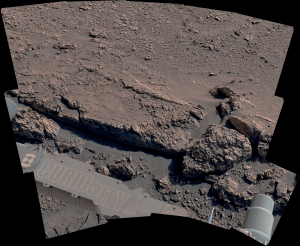Cassini Significant Event Report
For Week Ending 05/10/02
The most recent spacecraft telemetry was acquired from the Goldstone tracking station on Wednesday, May 8. The Cassini spacecraft is in an excellent state of health and is operating normally. Information on the spacecraft's position and speed can be viewed on the "Present Position" web page.
Spacecraft activities included loading of the new data policing tables, and uplink of the AACS Clear High Water Marks in preparation for a Reaction Wheel Assembly transition.
Instrument activities this week included the loading of several Instrument Expanded Blocks, execution of Periodic Instrument Maintenance for RADAR and the Radio Science Subsystem (RSS), observations of Fomalhaut were taken by the Visual and Infrared Mapping Spectrometer and Ultraviolet Imaging Spectrograph subsystems, and the Imaging Science Subsystem commanded the Narrow Angle Camera heaters to OFF after two months of decontamination.
RSS personnel successfully conducted a pattern calibration using Ka-band, X-band, and S-band frequencies over DSS-25. Data from all pattern calibrations conducted during Cruise will be compiled into a single model of the high-gain antenna. The Radio Science Team will use this model to analyze ring data acquired during Tour. During the pattern calibration, the status of the Ka-band Translator (KaT) was monitored. It was noted that the KaT remained in its "good state" throughout the track. The last time that the S-band Transmitter and KaT were both powered ON, the KaT immediately snapped to its "bad state".
RSS personnel also conducted a test of the Ka-band uplink subsystem, the monopulse tracking subsystem, and a new uplink acquisition template. This is the first use of these subsystems since January 4 at the end of Gravity Wave Experiment (GWE) #1, and the first use ever of the new template. Additionally, the monopulse developers successfully performed an on-point-phase-calibration.
The Program participated in a NASA Quarterly Meeting and a two day Independent Review Team Meeting.
At the Instrument Operations Working Group, a presentation was given about technical options that will satisfy voice communication requirements between Distributed Operations Sites and JPL during operations, given anticipated budgetary constraints in future years. A Peer Review of Cassini's Verification & Validation (V&V) plans was held with 314 section personnel in attendance. Also attending were V&V engineers from the Mars Exploration Rovers and Space Infrared Telescope Facility projects. Feedback from this meeting has been integrated into the Cassini V&V plan and Critical Design Review package.
Delivery Meetings were held for Telemetry, Command & Data Management 26.4 for Telemetry, Command, and Distributed Object Manager, and for Mission Sequence Subsystem D8. This week Cassini's Educational Outreach staff is attending the 40th Anniversary of Space Flight at the Smithsonian Institution.
Additional information about Cassini-Huygens is online at http://saturn.jpl.nasa.gov.
Cassini will begin orbiting Saturn on July 1, 2004, and release its piggybacked Huygens probe about six months later for descent through the thick atmosphere of the moon Titan. Cassini-Huygens is a cooperative mission of NASA, the European Space Agency and the Italian Space Agency. JPL, a division of the California Institute of Technology in Pasadena, manages the mission for NASA's Office of Space Science, Washington, D.C.
Media Relations Office
Jet Propulsion Laboratory
California Institute of
Technology
National Aeronautics and Space
Administration
Pasadena, Calif. 91109.
Telephone (818) 354-5011






























